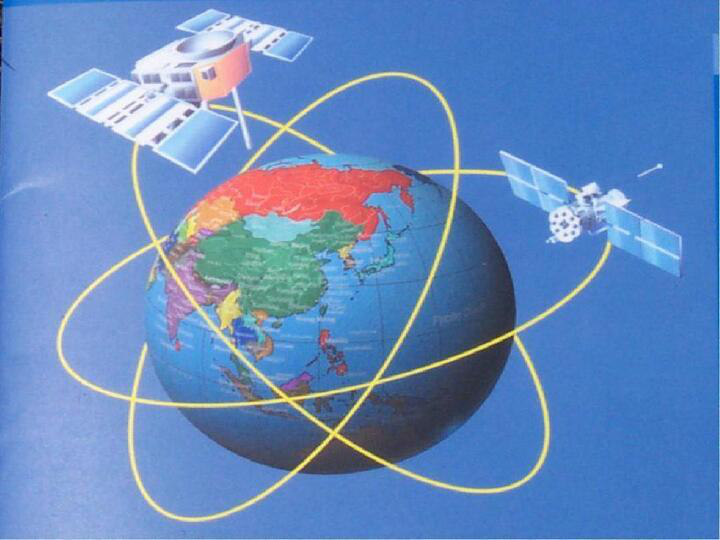Detailed description of the technical characteristics of the Beidou-3 star

B1C is the main signal of BeiDou-3, which is required to be received by all BeiDou users and even GNSS users in the world in the future, and will become an important symbol of the BeiDou system (similar to the L1 C/A of the current GPS and the L1C signal in the future).B1C is a new-generation navigation signal with advanced technology and independent intellectual property rights, and it can not only satisfy the needs of the consumer low-cost users such as the location service, but also meet the needs of professional high-performance users such as high-precision measurement. B1C is a new generation navigation signal with advanced technology and independent intellectual property rights, which can meet the needs of both consumer low-cost users, such as location services, and professional high-performance users, such as high-precision measurement.
The carrier frequency of B1C is 1575.42MHz, shared with GPS L1 and GalileoE1, and the bandwidth is 32.736MHz. It adopts the modernized signal structure of quadrature between data and guide frequency: the data component is generated by the subcarrier modulation of the navigation message and the ranging code, which is modulated by sinusoidal BOC(1, 1); the guide frequency component is generated by the subcarrier modulation of the ranging code, which is modulated by QMBOC(6, 1), which is modulated by QMBOC(6, 1), and the guide frequency is modulated by QMBOC(6, 1), which is modulated by QMBOC(6, 1). QMBOC(6, 1,4/33) modulation. The power ratio of the data component to the guide frequency component is 1:3, and the signal power is tilted to the guide frequency, which is in line with the design principle of the higher ranging accuracy, the better, and the demodulation can be used, which is conducive to improving the overall performance of the B1C signal.
The ranging code structure of B1C signal is the same as that of B2a, which is composed of main code and sub-code heterodyne. The main code rate is 1.023Mcps, the code length is 10230, which is obtained by truncating the Weil code with the length of 10243. There are 126 main codes, i.e., 63 data codes and 63 conduction codes, and the sub-code of the B1C conduction component is 1800 in length, which is obtained by truncating the Weil code with a length of 3607, and is generated in the same way as the main code, with a total of 63 codes.
The navigation message of B1C signal adopts B—CNAV1 format.The B-CNAV1 navigation message data is modulated on the B1C data component, and the length of each frame message is 1800 symbol bits, the symbol rate is 100 sps, and the broadcasting period is 18 seconds.
B2a is the second civil signal of BeiDou-3, which is used to replace the B2I signal of BeiDou-2, and mainly provides services for dual-frequency or triple-frequency receivers, which can be used for high-performance services such as life safety services and high-precision measurements, as well as for consumer services with higher performance requirements.
The carrier frequency of B2a signal is 1176.45MHz, shared with GPSL5 and Galileo E5a, and the bandwidth is 20.46MHz, and it also adopts the structure of quadrature of data and guide frequency (QPSK): the data component is generated by the modulation of the navigation message data and the ranging code, and it adopts BPSK(10) modulation; and the guide frequency component includes only the ranging code, and it adopts BPSK(10) modulation as well. BPSK(10) modulation is also used. The power ratio of the frequency-guided component to the data component is 1:1.
As mentioned earlier, the ranging code structure of the B2a signal is the same as that of the B1C, which also consists of the main code and subcode heterodyne. The main code rate is 10.23Mcps and the code length is 10230, which is obtained from two 13-level linear feedback shift registers by shifting and modulo two-sum generated Gold code expansion. On the same satellite, the main code generation polynomials for the two components of the B2a signal are different, but the same initial state is used.There are a total of 126 ranging codes for the B2a signal, of which there are 63 each for the data code and the frequency guide code. For different satellites, the subcodes of B2a data component are the same, and the subcodes of B2a frequency-conducting component are different.The code length of B2a data component is 5, and a fixed 5-bit code sequence is used as the subcodes, and the subcode sequence is 00010.The code length of B2a frequency-conducting subcodes is 100, which is obtained by truncation of the Weil code of the length of 1021, and the definition is same as that of the main code of B1C.
The navigation message of B2a signal is in B-CNAV2 format.The B-CNAV2 navigation message data is modulated on the B2a data component, and the length of each frame is 600 symbol bits, the symbol rate is 200sps, and the broadcast period is 3 s. The B-CNAV2 navigation message can define up to 63 information types, and currently 7 valid information types are defined.
B1C is a brand-new navigation signal with advanced technology, complex structure and more signal components, and a variety of different reception schemes can be developed to meet different user needs. Moreover, BeiDou 3 will broadcast B1C and B1I on MEO and IGSO satellites at the same time, which will develop unique reception methods and can fully exploit the potential of BeiDou 3. B2a signal is a composite signal orthogonal to the data and the guide frequency, which is similar to GPS L5 and Galileo E5a, and its basic reception method is already mature. Therefore, the main innovation of future BeiDou-3 reception technology lies in the new theory and method of B1C signal reception processing, as well as the efficient interoperability reception technology of B1C with GPS L1C and Galileo E1 OS signals. This is what will be introduced next in this report.
Let's first analyze the structural characteristics of the B1C signal. It has already been mentioned that the B1C signal consists of the BOC(1, 1) data component and the BOC(6, 1, 4/33) guide frequency component, where the BOC(6, 1, 4/33) component contains the orthogonal BOC(1, 1) and BOC(6, 1) components. Thus, the entire B1C signal actually contains three real components: the BOC(1, 1) data, the BOC(1, 1) derivative and the BOC(6, 1) derivative.
From this, from the methodological point of view, we can develop two basic reception methods: wideband reception and narrowband reception.
Wideband reception: the bandwidth is taken to be around 14 MHz, and the narrowband component BOC(1, 1) and the wideband component BOC(6, 1) are received simultaneously. In this matched reception mode, since the QMBOC of the B1C has the same power spectral density as the TMBOC and the CMBOC, the three have exactly the same capture and tracking performance.
Narrowband reception: the bandwidth is taken to be around 4MHz, and only the narrowband component BOC(1, 1) is received. When the receiver only handles the BOC(1,1) component, QMBOC has better performance: the capture sensitivity of QMBOC is more than 0.51 dB higher than that of TMBOC; the QMBOC performance is 0.6164 dB higher than that of TMBOC when the receive bandwidth is 4MHz.
Therefore, overall QMBOC performance is better than TMBOC and CMBOC signals of GPS and Galileo.
Since BeiDou 3 will broadcast B1C and B1I on MEO and IGSO satellites at the same time, and B1I and B1C are generated separately based on the same star clock, and then transmitted to the ground through amplifier and antenna after a special multiplexing scheme, B1C and B1I can be regarded as a special bilateral bandwidth signal from the user's point of view. We tentatively call it the asymmetric bilateral band signal B1-ADS at the frequency point of B1.The characteristics of the B1-ADS signal are:
(1) Very high equivalent RMS bandwidth: The equivalent bandwidth of B1-ADS is not only larger than that of B1I and B1C, but even larger than that of B2a signal using 10.23 Mcps broadband. Therefore, the B1-ADS signal has a significant theoretical advantage in ranging performance, as well as obvious anti-interference and anti-polymetric advantages.
(2) Complex autocorrelation function: The autocorrelation function of B1-ADS has a very sharp main peak, which indicates that the B1-ADS signal theoretically has a significant ranging performance advantage, but it also has a more complex side-peak structure, which needs to be solved in the reception of the complex multi-peak blurring problem.
Since the two sidebands B1I and B1C signals of B1-ADS have different modulation, code rate, message and power, the traditional processing techniques used for symmetric signal reception are not applicable. Therefore, we need to develop a special class of reception method to receive B1-ADS, i.e., to receive B1I and B1C at the same time, in order to further exploit the potential of ranging accuracy and anti-jamming and anti-polygraphy of BeiDou-3 signals. The following figure shows a proposed B1-ADS reception scheme, which is the joint reception scheme of B1I and B1C signals.
The basic ideas of this scheme are: drawing on DET to independently track the subcarrier to solve the multi-peak blurring; correlating the upper and lower sidebands separately to avoid generating the subcarrier waveforms and flexibly supporting the double and single sideband processing; adopting correlators with different structures in the upper and lower sidebands to solve the problem of different modulation modes in the upper and lower sidebands; utilizing the known transmit power ratio to perform power compensation and solving the problem of different power in the upper and lower sidebands; and utilizing the data-assisted message stripping method to solve the B1I data-only channel problem.
This method can support the quasi-optimal reception processing of B1-ADS signals with low hardware complexity, in addition to being compatible with B1I or B1C independent reception processing modes.
From this, we can see that the technical characteristics of China's Beidou-3 star are fine and successful. And the June 2020 deployment of the full completion of the BeiDou 3 system in terms of precision, BeiDou is the only use of medium circular orbit, geostationary orbit, geosynchronous orbit three orbital collocation of the constellation, so that the Asia-Pacific region can almost permanently maintain at least 12 satellites are visible, significantly improving the positioning accuracy of the region. In addition, BeiDou uses tri-frequency signals, which is conducive to enhancing the resistance to ionospheric interference and improving positioning reliability. The completion of the deployment of the Beidou global system constellation can be called one of China's most successful scientific and technological achievements in 2020, and an important asset in guarding our national security.














